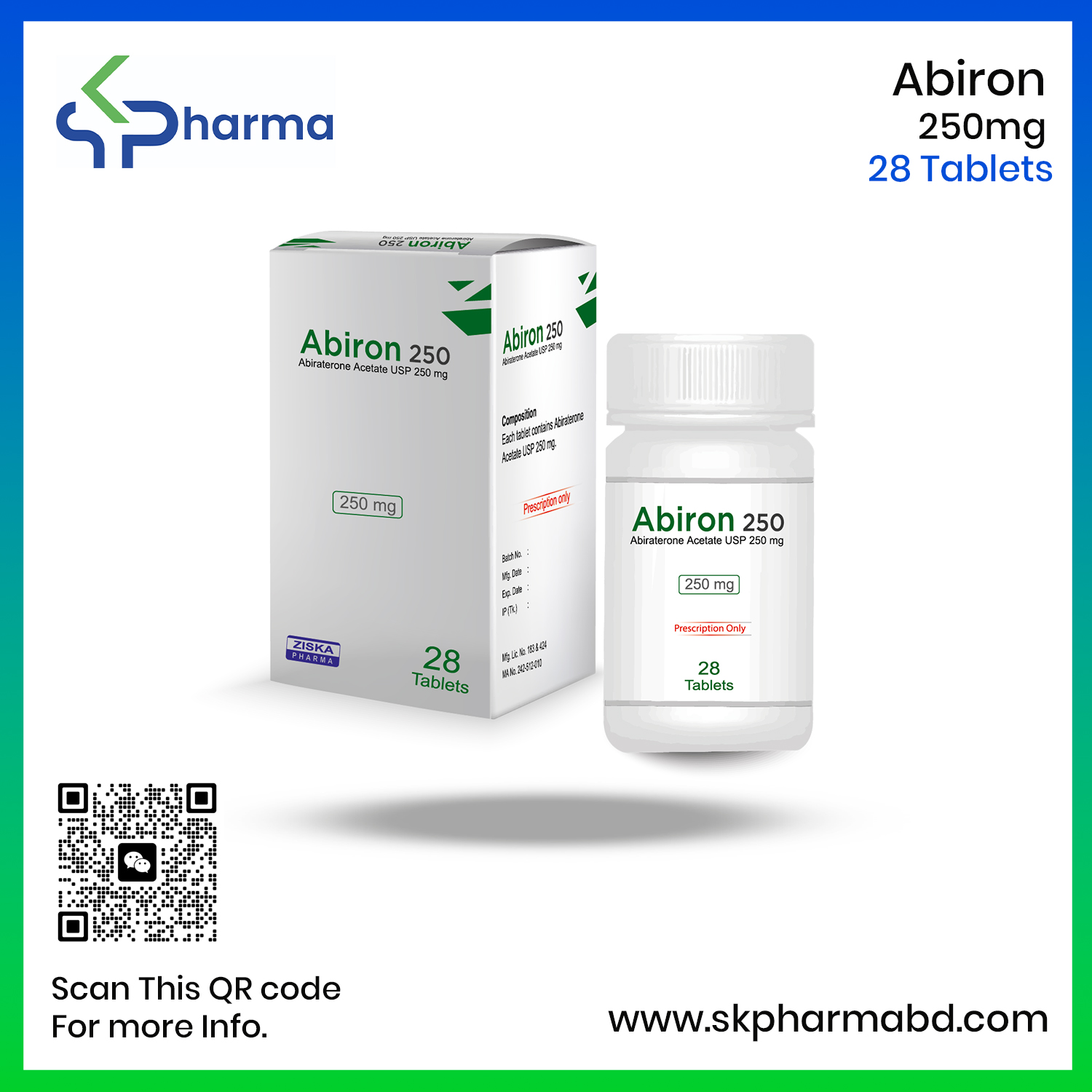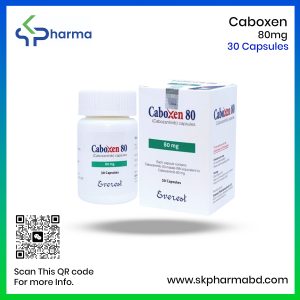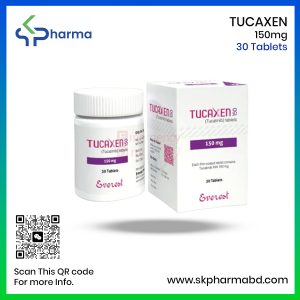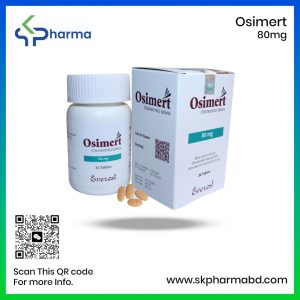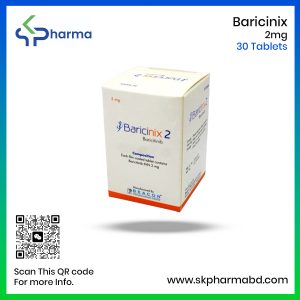Related products
Product Description
PHARMACOLOGY:
Abiraterone Acetate is converted in vivo to Abiraterone, an androgen biosynthesis
inhibitor, that inhibits 17 α-hydroxylase/C17, 20-lyase (CYP17). This enzyme is
expressed in tes�cular, adrenal, and prosta�c tumor �ssues and is required for
androgen biosynthesis. CYP17 catalyzes two sequen�al reac�ons: 1) the conversion
of pregnenolone and progesterone to their 17 α-hydroxy deriva�ves by 17
α-hydroxylase ac�vity and 2) the subsequent forma�on of dehydroepiandrosterone
(DHEA) and androstenedione, respec�vely, by C17, 20 lyase ac�vity. DHEA and
androstenedione are androgens and are precursors of testosterone. Inhibi�on of
CYP17 by Abiraterone can also result in increased mineralocor�coid produc�on by
the adrenals. Androgen sensi�ve prosta�c carcinoma responds to treatment that
decreases androgen levels. Androgen depriva�on therapies, such as treatment with
GnRH agonists or orchiectomy, decrease androgen produc�on in the testes but do
not affect androgen produc�on by the adrenals or in the tumor.
Abiraterone Acetate decreased serum testosterone and other androgens in pa�ents
in the placebo-controlled clinical trial. It is not necessary to monitor the effect of
Abiraterone Acetate on serum testosterone levels. Changes in serum prostate
specific an�gen (PSA) levels may be observed but have not been shown to correlate
with clinical benefit in individual pa�ents.
Pharmacokine�cs:
Absorp�on
Following oral administra�on of Abiraterone Acetate to pa�ents with metasta�c
CRPC, the median �me to reach maximum plasma Abiraterone concentra�ons is 2
hours. Abiraterone accumula�on is observed at steady-state, with a 2-fold higher
exposure (steady-state AUC) compared to a single 1,000 mg dose of Abiraterone
Acetate. At the dose of 1,000 mg daily in pa�ents with metasta�c CRPC, steady-state
values (mean ± SD) of Cmax were 226 ± 178 ng/mL and of AUC were 993 ± 639
ng.hr/mL. No major devia�on from dose propor�onality was observed in the dose
range of 250 mg to 1,000 mg. However, the exposure was not significantly increased
when the dose was doubled from 1,000 to 2,000 mg (8% increase in the mean AUC).
Systemic exposure of Abiraterone is increased when Abiraterone Acetate is
administered with food. In healthy subjects Abiraterone Cmax and AUC0-∞ were
approximately 7- and 5-fold higher, respec�vely, when a single dose of Abiraterone
Acetate was administered with a low-fat meal (7% fat, 300 calories) and
approximately 17-and 10-fold higher, respec�vely, when a single dose of
Abiraterone Acetate was administered with a high-fat (57% fat, 825 calories) meal
compared to overnight fas�ng. Abiraterone AUC0-∞ was approximately 7-fold or
1.6-fold higher, respec�vely, when a single dose of Abiraterone Acetate was
administered 2 hours a�er or 1 hour before a medium fat meal (25% fat, 491
calories) compared to overnight fas�ng. Systemic exposures of Abiraterone in
pa�ents with metasta�c CRPC, a�er repeated dosing of Abiraterone Acetate were
similar when Abiraterone Acetate was taken with low-fat meals for 7 days and
increased approximately 2-fold when taken with high-fat meals for 7 days compared
to when taken at least 2 hours a�er a meal and at least 1 hour before a meal for 7
days. Given the normal varia�on in the content and composi�on of meals, taking
Abiraterone Acetate with meals has the poten�al to result in increased and highly
variable exposures. Therefore, Abiraterone Acetate must be taken on an empty
stomach, either one hour before or two hours a�er a meal. The tablets should be
swallowed whole with water.
Distribu�on
Abiraterone is highly bound (>99%) to the human plasma proteins, albumin and
alpha-1 acid glycoprotein. The apparent steady-state volume of distribu�on (mean
± SD) is 19,669 ± 13,358 L. In vitro studies show that at clinically relevant
concentra�ons, Abiraterone Acetate and Abiraterone are not substrates of
P-glycoprotein (P-gp) and that Abiraterone Acetate is an inhibitor of P-gp.
Metabolism
Following oral administra�on of 14C- Abiraterone Acetate as capsules, Abiraterone
Acetate is hydrolyzed to Abiraterone (ac�ve metabolite). The conversion is likely
through esterase ac�vity (the esterases have not been iden�fied) and is not CYP
mediated. The two main circula�ng metabolites of Abiraterone in human plasma
are Abiraterone Sulphate (inac�ve) and N-oxide Abiraterone Sulphate (inac�ve),
which account for about 43% of exposure each. CYP3A4 and SULT2A1 are the
enzymes involved in the forma�on of N-oxide Abiraterone Sulphate and SULT2A1 is
involved in the forma�on of Abiraterone Sulphate.
Excre�on
In pa�ents with metasta�c CRPC, the mean terminal half-life of Abiraterone in
plasma (mean ± SD) is 12 ± 5 hours. Following oral administra�on of 14CAbiraterone
Acetate, approximately 88% of the radioac�ve dose is recovered in feces and
approximately 5% in urine. The major compounds present in feces are unchanged
Abiraterone Acetate and Abiraterone (approximately 55% and 22% of the
administered dose, respec�vely).
INDICATIONS:
Abiraterone Acetate is indicated in combina�on with Prednisone for the treatment
of pa�ents with
• Metasta�c castra�on-resistant prostate cancer (CRPC)
• Metasta�c high-risk castra�on-sensi�ve prostate cancer (CSPC)
DOSAGE AND ADMINISTRATION:
Recommended Dose For Metasta�c CRPC: The recommended dose of Abiraterone
Acetate is 1,000 mg (two 500 mg tablets or four 250 mg tablets) orally once daily
with Prednisone 5 mg orally twice daily. Recommended Dose For Metasta�c
High-Risk CSPC: The recommended dose of Abiraterone Acetate is 1,000 mg (two
500 mg tablets or four 250 mg tablets) orally once daily with Prednisone 5 mg

